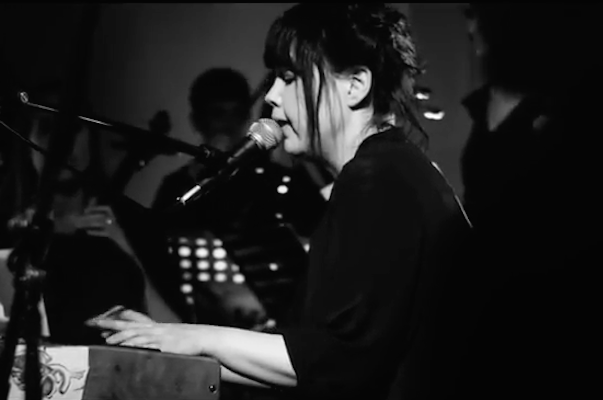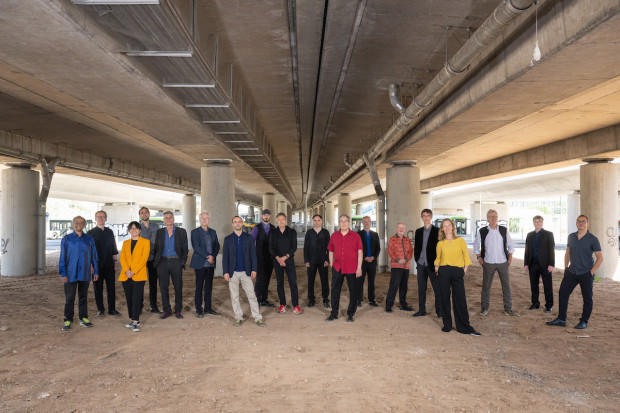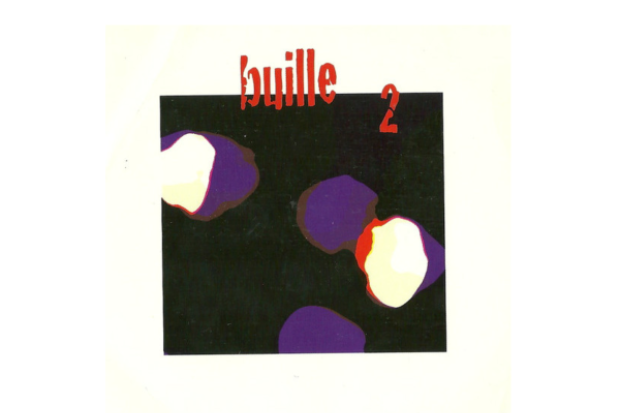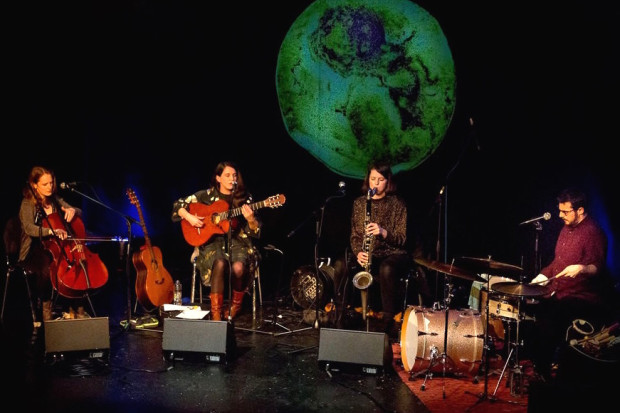
Katie Kim
Songs of Conviction
In recent years, Crash have been performing with ever more indie artists from rock and pop, from Keaton Anderson and Sam Amidon to Adrian Crowley and the Bedroom Community. In Salt Interventions, first performed in Bandon last October and again at The Grand Social in Dublin as part of MusicTown 2017 in April, Crash collaborates with songwriter Katie Kim to create a new live version of her most recent album Salt (2016), with arrangements by composer Seán Clancy.
Time and texture
The pairing of Clancy with Katie Kim might not seem like an obvious one, and yet both straddle genre divisions consciously, Clancy in particular dividing his output between instrumental composition that frequently draws on pop/rock language and work with synths. Both seem fascinated by texture as a primary means of expression: Clancy in his sparkling-clear instrumental writing and his noisier electronic work, while Katie Kim’s songs constantly blur the distinction between organic and synthetic sources in a wash of sound. And, perhaps most importantly for this collaboration, each play with stasis and the suspension of time, Clancy through process works like Five Lines of Music Slow Down and Eventually Stop, and Katie Kim through the slow constant pacing of songs, and a habit of burying her vocals deep within the overall texture.
The music on the Salt album is similar to the basement-recording sound established in her breakout album Cover & Flood (2012), but crystallised, with the sound of each track sounding like the result of a carefully-made decision rather than a musician figuring her way. As an album, Salt realises its expressive goals more efficiently (with half the number of tracks) and is all the more striking for it.
Katie Kim’s songs are generally built around a simple instrumental idea, such as a guitar figure oscillating between two notes or a repeating sequence of piano chords. Over this base she builds a gently rolling musical texture, using multiple instrumental layers, processed ambient synths and sound washes, topped by her carefully processed vocal lines. She sings in a deliberately, almost affectedly gentle and whispered manner, using extreme cathedral-like reverbs and delays, allowing her vocal line to emerge to breathe only occasionally. The effect on the listener is of eavesdropping into a deeply personal, perhaps even internal musical monologue.
Instrumental interventions
For Salt Interventions, Clancy brought a clarity of touch to instrumentation as well as an attractive lightness of gesture. Keeping the main instrumental guitar/piano motif at the heart of each song – played by Katie Kim – he created a series of instrumental ‘interventions’.
The opening tracks, ‘Ghosts’ and ‘Day is Coming’ (a surprisingly heavy experience on the album), felt somewhat overwrought, however, with strings that swept up registers too easily, creating a sense of cinematic emotiveness that did not entirely feel true to the songs. In subsequent songs, the balance felt better. For the middle sequence of tracks (‘Someday’, ‘Body Break’, ‘I Make Sparks’), the instrumental arrangements were subtle: a pulsing clarinet echoing the bass line here, pizzicato colourations over a constant rhythm there, tiny percussion punctuations and barely-there string swells.
The Crash musicians made their presence felt in ‘Beautiful Human’ with harder edges, violin/viola motifs that come in and out over a ground of guitar and bass lines from the lower strings that could almost be called thumping, the whole piece sweeping ever upwards before sinking back down for the last two tracks. ‘Thieves’, despite being significantly more understated, was one of the most striking songs of the night, though little changed from its album version; a somewhat affectless song built of very simple gestures, it was supported by tremolo chords from the strings that injected a tremendous warmth into something that could easily become mechanical in performance.
These new versions of Katie Kim’s songs give the listener a profoundly different experience of Salt in one way in particular: Clancy’s clarity of orchestration allowed her voice to be foregrounded in a way that is rare in her recordings, exposing both the emotional pull of her songs and the technical assuredness of her voice and songwriting. She is a songwriter of conviction, and these interventions illustrated her ability to not only create beautiful vocal gestures, but to develop them in the most subtle ways.
For more, visit https://katiekim.bandcamp.com.
Published on 18 April 2017
Anna Murray is a composer and writer. Her website is www.annamurraymusic.com.

















